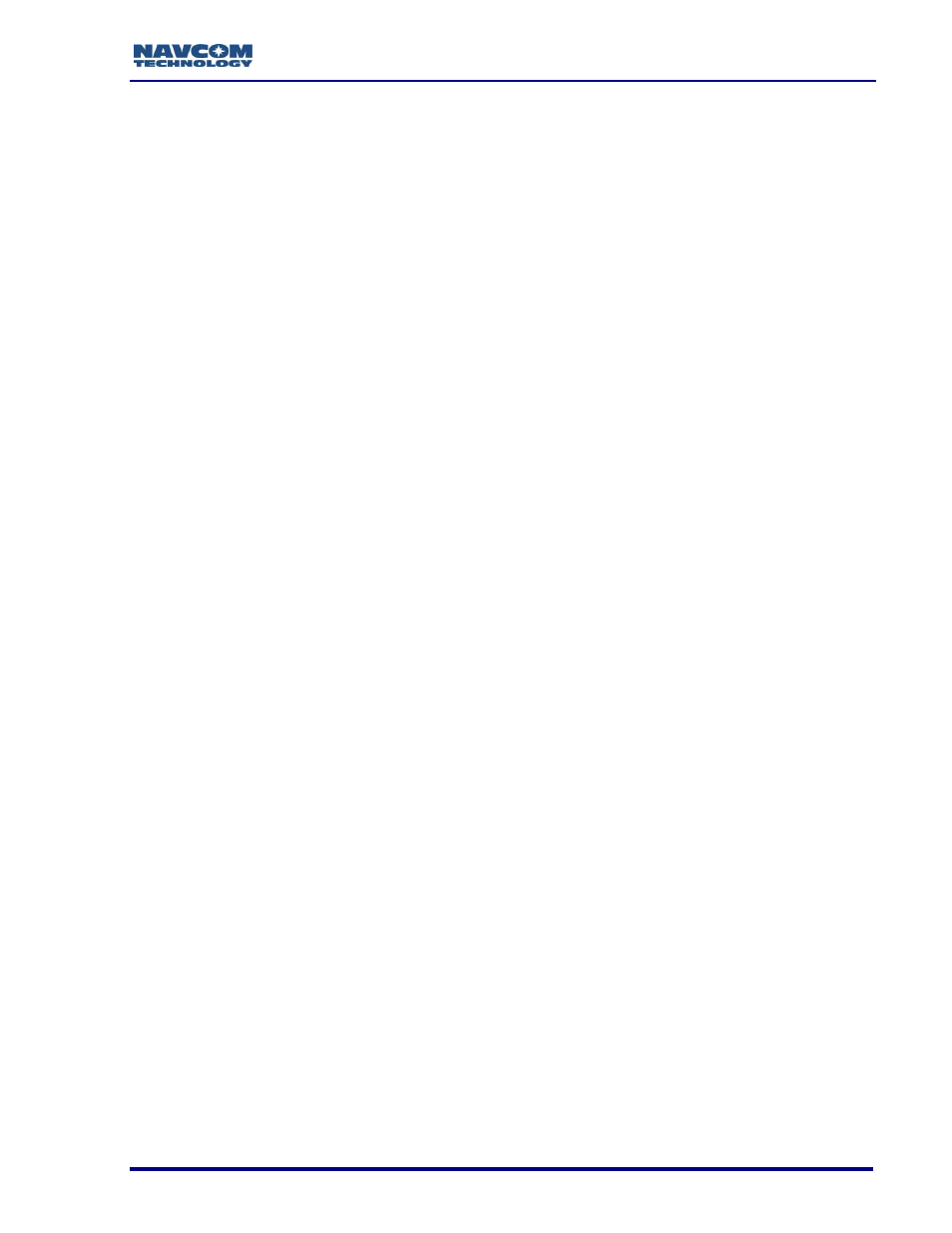Chapter 6, Configuration – NavCom SF-3050 Rev.I User Manual
Page 120

SF-3050 GNSS Product User Guide
– Rev I
101
Chapter 6 .................................................................... Configuration
The SF-3050 has a rich interface and detailed control language, allowing each unit to be
individually programmed to a specific application.
There are essentially three methods available to configure and control the SF-3050:
StarUtil 3000
– This program is a NavCom- developed utility designed to configure
and view many (but not all) of the SF-3050 functions. In addition to its setup
capabilities, StarUtil 3000 can capture and log data, upload new software and licenses
to the internal processor, and query and display various receiver performance
functions. Though it is developed as an Engineering tool, it has its own place in the
commercial market as well. The program is provided on the SF-3050 Product USB
Flash Drive.
3
rd
party controller
– Some manufacturers have already integrated NavCom’s control
features in their bundled hardware and software solution kits in a variety of
applications including GIS, Machine Control, Aerial Photogrammetry, Land &
Oceanographic Survey, Agriculture, and Military products. Information on these
applications is available from the NavCom web site and customer service.
User Program
– Users may develop unique operating programs to control the SF-
3050 (potentially in conjunction with other devices or utilities). To facilitate this effort,
NavCom provides the Sapphire Technical Reference Manual (TRM). Information on
this tool is available from the NavCom web site and customer service.
There is no default control port on the receiver. When either port is connected to control
software, such as StarUtil 3000, that port becomes the control port.
COM1 - LAN
Configuration
– Control or Data Port
Rate
– RS-232: 9.6 to 115.2kbps
Ethernet: 10 to 100Mbps
This port is normally used to input and output proprietary messages used for navigation
and receiver setup. Table 22 describes the default messages needed to best initiate
surveying with minimal effort.
The user has full control over the utilized message types and their associated rates via
either
StarUtil 3000 or a third party software/utility.
COM2 - USB
Configuration
– Control or Data Port
Rate
– RS-232/RS-422: 9.6 to 115.2kbps
USB 2.0: 12Mbps
This port is normally used to output data to other devices or machines that can make
immediate use of the precise positioning data available from the
SF-3050. The data port outputs NCT Binary Messages and NMEA Messages, and when
applying external dGNSS corrections, also serves as the dGNSS correction input port.